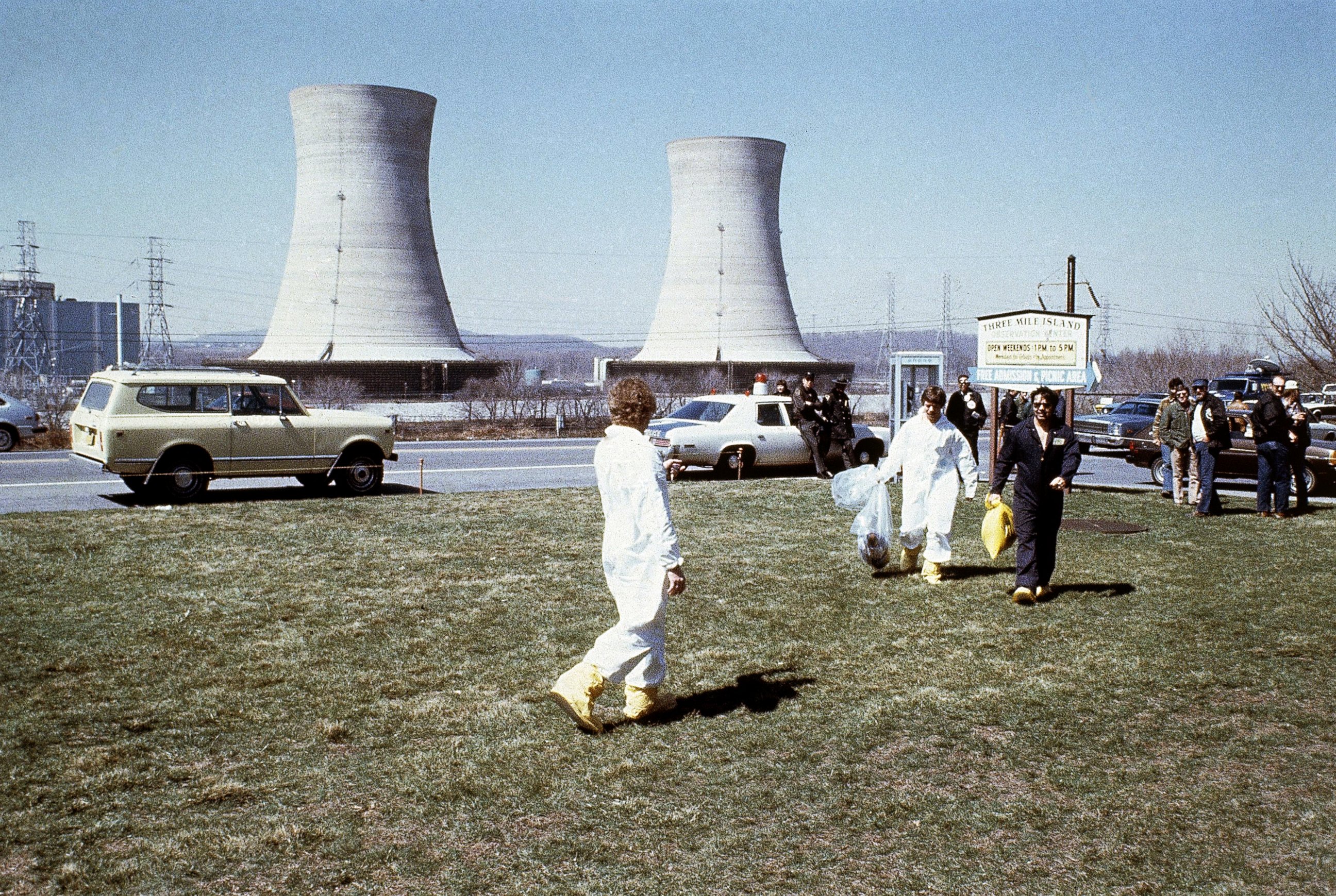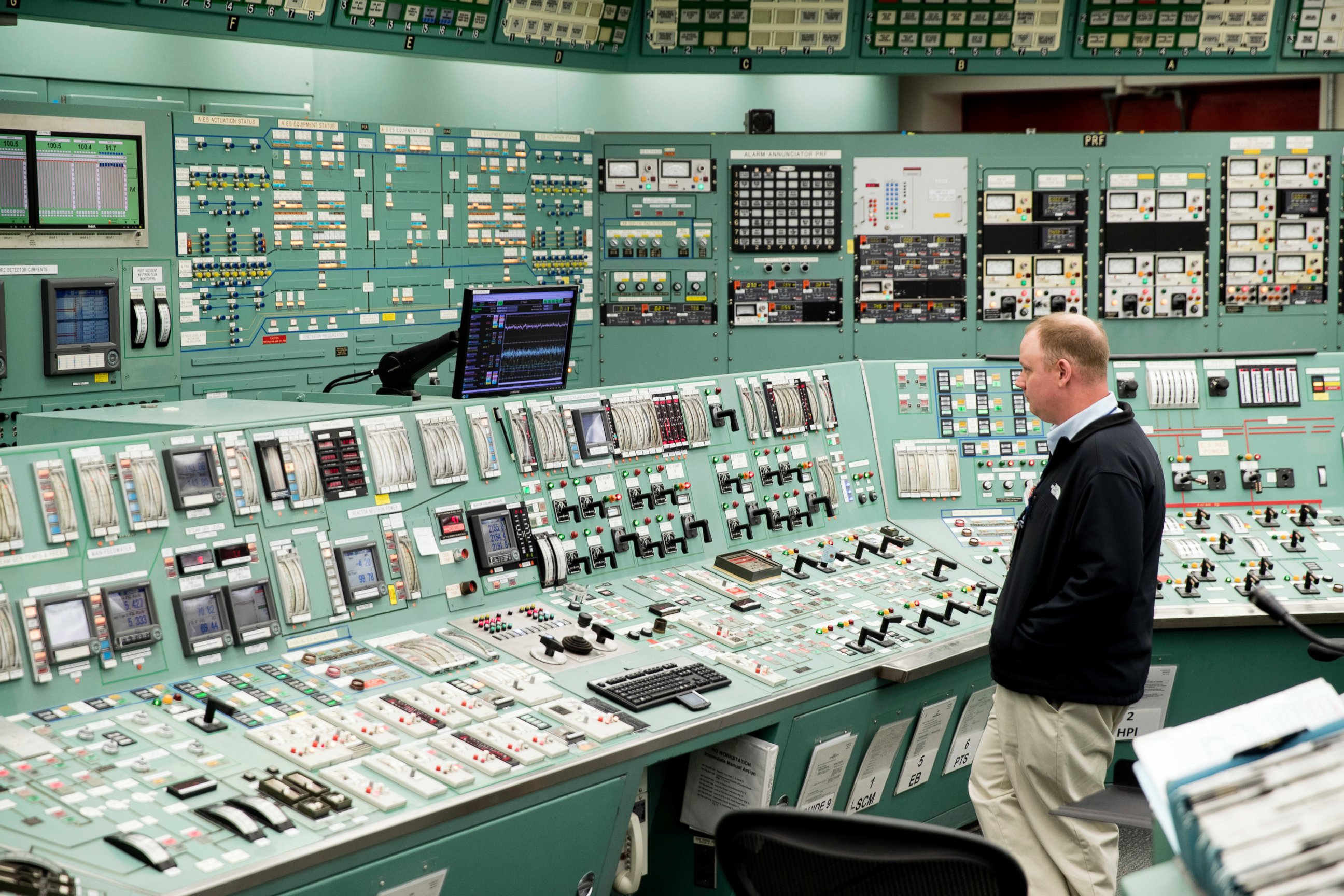A brief history of the Three Mile Island nuclear plant known for 1979 reactor accident
It was the site of the worst commercial nuclear power accident in the U.S.
— -- Three Mile Island, the Pennsylvania nuclear power plant that was the site of the worst commercial nuclear power accident in the United States 38 years ago, will close in 2019 unless it receives a state bailout, parent company Exelon Corp. said.
The state is the second largest producer of nuclear power in the nation, after Illinois, according to the The Associated Press.
The company said it cannot continue operating Three Mile Island, which is located about 10 miles from Harrisburg, Pennsylvania on the Susqeuhanna River, at a loss and that it should be eligible for clean energy incentives provided to wind, solar and hydro-electric energy companies since nuclear energy provides roughly 93 percent of the state's "emissions-free energy."
But the nuclear power industry, which has long been the subject of debate and distrust, particularly after the Three Mile Island accident, has been hurt financially by a natural gas boom fueled by a rise in fracking and renewable energy sources.
Here is a brief history of one of the most infamous nuclear power plants in the U.S.:
1968
Construction began on Unit 1 of Three Mile Island, during what the AP described as the golden age of nuclear power.
1974
Unit 1 of Three Mile Island went online.

1978
Unit 2 of Three Mile Island went online.
March 28, 1979
One of the two reactors at Three Mile Island experienced a mechanical or electrical failure in water pumps that helped cool its core. Employees were not aware of the malfunction and control room instruments did not show the leak of cooling water had left too little around the reactor. They compounded the problem by taking steps to prevent emergency cooling water from flowing in. The nuclear fuel overheated and roughly half the reactor's core melted, according to the U.S. Nuclear Regulatory Commission.
Though investigators concluded that the radioactive water and gas did not escape the containment wall, the community was concerned about workers and nearby residents. The accident lead to widespread, increased public concern about the safety of nuclear plants.
Harrisburg resident William Whittock described the accident to ABC News in 1979 as a "geyser of stream" that erupted from the top of the plant.
"I heard a very loud noise that sounded like a huge release of steam," Whittock said at the time. "I looked out the window, and it was dark, but you could see from the lights that there was a geyser of steam rising up in the air."

The gases released by the accident were feared to be radioactive and prompted the Pennsylvania Gov. Dick Thornburgh to evacuate pregnant women from the area, according to History.com.
The accident occurred less than two weeks after the release of Hollywood thriller "The China Syndrome" about a fictional meltdown at a nuclear reactor.
The reactor that was damaged was closed after the accident, but the other reactor remained in use.
August 14, 1993
The New York Times published a report stating that the cleanup from the 1979 accident at Three Mile Island has finally concluded after 14 years.
That month, the cleaning of 2.3 million gallons of waste water from the accident was completed, according to the United States Nuclear Regulatory Commission.
March 2009
Thirty years after 1979 nuclear-power crisis, advocates for nuclear power begin speculating about a "nuclear renaissance." In the two years prior, the government had received 26 applications to start work on new nuclear reactors, after a 28-year lull.
"Nuclear will become one of the most important base-load sources of electricity in the world," said Patrick Moore, co-chairman of the CASEnergy Coalition, a nuclear power advocacy group in Washington, D.C, at the time.
Nov. 23, 2009
The Nuclear Regulatory Commission investigated what caused a minor leak in one of the plant's reactors, which exposed 20 workers to radiation.
Out of the 150 workers who were evacuated, 20 of them tested positive for radiation.
Feb. 9, 2012
The federal government approved the construction of two new nuclear reactors, making them the first to be built in the U.S. since the 1979 partial meltdown at Three Mile Island.
The U.S. Nuclear and Regulatory Commission gave permission for the Southern Company of Atlanta to add two reactors to its existing pair at the Vogtle Electric Generating Plant in Waynesboro, Georgia.
October 2012
Three Mile Island is one of nine nuclear power plants that braced for the wrath of Hurricane Sandy, which wreaked havoc on the Northeast, causing billions of dollars in damage that year.

May 30, 2017
The Chicago-based owner of Three Mile Island, Exelon Corp., announced that it will "prematurely retire" the power plant unless policy reforms or other incentives are made available to help defray costs.
Exelon employs 675 people at the plant and another 1,500 contract workers, the company said in a statement. Its license does not expire until 2034, according to the AP.
"Today is a difficult day, not just for the 675 talented men and women who have dedicated themselves to operating Three Mile Island safely and reliably every day, but also for their families, the communities and customers who depend on this plant to produce clean energy and support local jobs," Exelon CEO Chris Crane said.
ABC News' Michael Edison Hayden and The Associated Press contributed to this report.





